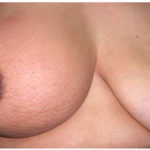Breast Cancer
Home / FAQ

Early Stage

Late Stage
Did You Know?
Men can get breast cancer too.
Breast cancer is the most common cancer among women in the United States and the second most frequently diagnosed cancer. American Cancer Society statistics indicate that over 192,000 women were diagnosed with breast cancer in 2009, representing one out of every eight adult women in the United States. This suggests that countries which still look up to the US conventional medicine for solution to their cancer problems need to rethink.
- A lump or thickening of breast.
- Retraction of nipple
- Discharge from the nipple
- Enlarged lymph nodes in the armpit.
- Change in the skin of breast eg. swelling
- Ionizing Radiation (X-rays).
- Immune-suppressing Drugs.
- Multiple Nutritional Deficiencies.
- Toxic Emotions.
- Hormone Therapies.
- Cellular Oxygen Deficiency
- Mercury Toxicity (Including Dental Filling)
- Nuclear Radiation
- Depressed Thyroid Action
- Industrial Toxins
- Irradiated Foods
- Pesticide/Herbicide Residues
- Free Radicals
- Food Additives
- Chronic stress
- Polluted water, Fluoridated water and Chlorinated water
- Viruses
- Electromagnetic Field Exposure
- Tobacco/Smoking
- Parasites
Research has also shown that there is a connection between bra-wearing and breast cancer. The lymph channels and nodes of the armpit can get congested from wearing bras and from lack of exercise. Women who wear their bras over 12 hours daily but not to bed (the majority) are 21 times more likely to develop cancer compared with women who wear their bras less than 12 hours a day. Women who wear bras to bed have 125-fold greater risk of getting breast cancer than women who don’t wear bras at all. (Source: Sydney Singer & Soma Grismaijer, Dressed to kill: The Link Between Breast Cancer and Bras (New York: Avery Publishing, 1995.)
Surgical removal of a lump in the breast (lumpectomy) or total removal of the breast (mastectomy) and the removal of the axillary nodes can result in lymphedema – swollen arm and hand – often worsened by attendant numbness and excruciating pain.
Chemotherapy produces more cancers. According to the Journal of the National Cancer Institute (May 1995), the use of chemotherapy increases the risk of bone, joint and soft tissue cancer by six times. Experts from 14 Cancer Centers who studied 10,000 cases also found that patients who take chemotherapy for Hodgkin’s disease are 14 times more likely to develop Leukemia. According to leading British Cancer Specialists, the cancer from which most people die – the big killers like breast, colon and lung cancer – generally do not respond to chemotherapy. Several studies point to the fact that chemotherapy has no survival value in breast cancer. The prestigious British medical journal, The Lancet, reports that survival may even be shortened in some breast cancer patients who receive chemotherapy. (The Lancet, 15 March 1980, p580). Radiotherapy is a source of free radicals that can damage DNA and predispose the body to cancers. According to Samuel S. Epstein, M.D, both chemotherapy and radiation can increase the risk of developing a secondary cancer by up to 100 times (Congressional Record, September 9, 1987).
Mammography is an x-ray of the breast designed to pick up early malignancies. Mammograms increase cancer by exposing the breast to the damaging effect of radiation. During a mammogram, enormous pressure is exerted on the woman’s breast, as the breast is pressed between two flat plastic surfaces. This compression can cause existing cancer cells to migrate (metastasize) from the breast tissue. Mammogram screening is also uncomfortable, to say the least, and very painful. John Gofman, M.D., Ph.D., an authority on the effect of ionizing radiation on humans, estimates that 75% of breast cancer can be prevented by minimizing or avoiding exposure to the ionizing radiation from mammography and x-rays. Since 1983, when mammographic screening was introduced, the incidence of ductal carcinoma in situ (DCIS), which represented 12% of all breast cancer cases, has increased by 32%.
Mammography is unreliable because it produces high rate of false results. In other words, the rate at which negative results are reported as positive is high. Likewise, the rate at which positive results are reported as negative, thus creating fear or panic and waste of money on unnecessary tests. Mammography can also be deceptive. It can take fibrocystic breast tissue for tumors, leading to unnecessary biopsies which are themselves harmful to healthy breast tissues. The National Cancer Institute notes that in women aged 40-49, there is a high rate of what it calls “missed tumors”, that is, 40% false-negative test results. The breast tissue of women under 40 is generally denser than that of older women, and this also makes it difficult to detect tumors with mammography in this category of women. A study by Breast Cancer Action in San Francisco, California, found that a greater percentage of breast cancer detected was by self-examination and not by mammogram. It is important, therefore, that women conduct monthly breast examination. And when it comes to treatment, alternative treatment methods, that are far more effective for reversing breast cancer, are available at some centers in the US, Mexico and other parts of the world, including Immanu-el Cancer Help Center and Goshen Bio-medical Clinic in Ghana.
